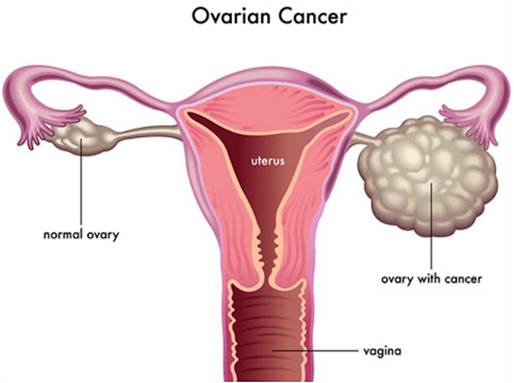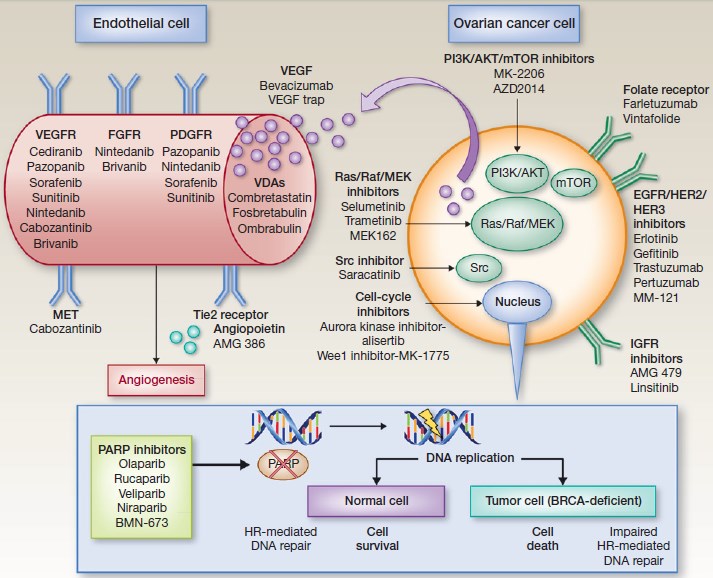- Home
- Applications
- Ovarian Cancer
ADC Development Services for Ovarian Cancer Research
Ovarian cancer is the second most common and deadliest gynecologic malignancy. Although traditional surgery and chemotherapy achieve the high incidence of complete remissions, the recurrence rate is also frequent. New treatment approaches are needed to be explored to improve outcomes. Creative Biolabs is a service provider in the field of antibody and antibody-related drug development. We offer comprehensive ADCs development services for the targeted ovarian cancer treatment. Our unique antibody disovery and leading-edge bio-conjugation programs can help clients obtain optimal ADC candidates.
Introduction of Ovarian Cancer
Ovarian cancer is a type of cancer arising from the ovaries. Ovaries are a part of the female reproductive system located at the side of the uterus, which can produce ova and the hormones estrogen and progesterone to maintain the normal physiological function. Abnormal cells can invade or spread to other parts of the body during the ovarian cancer. Symptoms generally include abdominal bloating or swelling, quickly feeling full when eating, unexplained weight loss, discomfort in the pelvis area, changes in bowel habits and frequent urinate. Currently, the specific cause of the ovarian cancer is unclear. Risk factors of ovarian cancer include older age, inherited gene mutations especially the breast cancer gene 1 (BRCA1) and breast cancer gene 2 (BRCA2), family history of ovarian cancer, estrogen hormone replacement therapy and age of menstruation started and ended. There are three main types of the cancer including the epithelial tumors that are the most percent of ovarian cancers, stromal tumors and the germ cell tumors. To date, surgery, chemotherapy and targeted therapy are the major treatment approaches.
 Fig.1 Ovarian cancer.
Fig.1 Ovarian cancer.
Current Therapeutic Strategies for Ovarian Cancer
Standard treatment for ovarian cancer (OC) is surgical management with primary cytoreduction followed by the platinum-based chemotherapy. Although most of OC respond to chemotherapy initially, however, the majority of the cancer will recur due to the emergence of drug resistance that presents the cure diminishes. To date, some new approaches are developed actively for the OC therapy.
- Targeted anti-angiogenic treatment with bevacizumab and weekly dose-dense paclitaxel can improve survival of OC. Thus, both of these approaches are considered as new standards-of-care. Besides, a combination of cytoreductive surgery and hyperthermic intraperitoneal chemotherapy (HIPEC) is a novel method used for the treatment of patients with OC.
- Angiogenesis inhibitors targeting the vascular endothelial growth factor (VEGF) as another effective therapy are used in the OC treatment. Inhibition of pathological angiogenesis represents one of the new therapeutic options widely in OC treatment, such as the bevacizumab, cediranib, pazopanib and aflibercept. Inhibitors of VEGF receptors are also widely tested in the cancer therapy. Cediranib is anti-angiogenic multikinase inhibitor, which has showed promising antitumor activity in OC treatment. Other inhibitors of VEGF receptors include the Pazopanib and Nintedanib. Other novel therapy options include the poly (ADP-ribose) polymerase (PARP) inhibitor (such as the Olaparib, Niraparib, Rucaparib and Talazoparib), EGFR tyrosine kinases inhibitors, and folate receptor α inhibitors.
- Immunotherapy is a potential and promising therapy stragety for ovarian cancer, such as the ADC, checkpoint inhibitors and immune modulators. Pembrolizumab is a checkpoint inhibitor against PD-1 approved for the ovarian cancer. Other inhibitors include the Ipilimumab, Avelumab, Atezolizumab and so on. IMGN853 is an ADC targeting the folate receptor-α (FRα),and it is investigated in three phase I trials and one phase III trial, which demonstrates significant antitumor efficacy and safety in women with platinum-resistant FRα-positive advanced OC. Other ADCs investigated in different clinical trial phases include Lorvotuzumab mertansine, SC‑003, PF‑06647263, CMB‑401 and so on.
 Fig.2 Targeted therapies in ovarian cancer. (Banerjee, 2013)
Fig.2 Targeted therapies in ovarian cancer. (Banerjee, 2013)
There are a number of targets involved in ADC development for ovarian cancer:
Featured ADCs Development Services Against OC
OC is the most lethal gynecological malignancy although conventional therapies achieve improved outcome. Thus, it is needed to design new treatment options such as targeted therapies to increase anti-tumor activity and minimize toxicity to normal cells. As a novel targeted therapeutic agent presenting significant potential and promising in the OC therapy, ADCs have obtained attractive attention. With years of experience in antibody discovery and bio-conjugation, Creative Biolabs offers an extensive range of ADCs preparation services targeting the OC. If you are interested in our platforms or our services, please contact us for more detail information.
Reference
- Banerjee, S.; Kaye, S. B. New strategies in the treatment of ovarian cancer: current clinical perspectives and future potential. Clinical cancer research. 2013, 19(5): 961-968.
For Research Use Only. NOT FOR CLINICAL USE.

Online Inquiry
Welcome! For price inquiries, please feel free to contact us through the form on the left side. We will get back to you as soon as possible.
